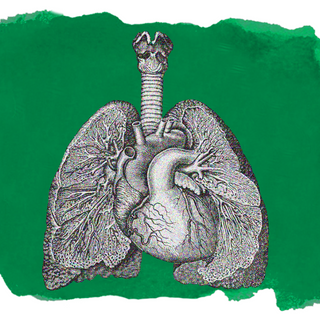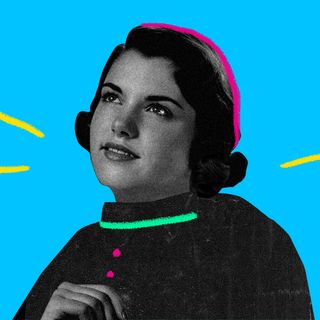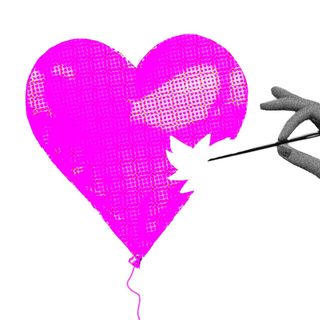
Burnout Among Doctors Is Not Only Impacting Their Health, but Also Patient Safety, Finds Study
Burnout in medicine is reflective of the health infrastructure’s inadequacies, and the responsibility of care must “shift from individual physicians to institutions.”

Some two years ago, burnout emerged asa “silent crisis in global health.” A state of exhaustion and disillusionment has since unsparingly worsened the emotional and physical well-being of millions of people. For doctors, the silent crisis is turning deafening: burnout is not only sapping thousands of these frontline workers of energy and motivation in their careers, but also hampering the quality of care provided to patients.
The large systemic review, published in the British Medical Journal, was a meta-analysis of 170 observational studies published in countries like the U.S., U.K., Asia, Africa, and other parts. The rich literature documented experiences of as many as 2,39,246 physicians.
The pattern among doctors with burnout was such: people were four times more likely than others to express dissatisfaction with their jobs, three times as likely to have thought about quitting, and three times as likely to “regret” being a doctor in the first place. This shaped their engagement with patients too, with them showing “low professionalism” and receiving low satisfaction ratings from patients. They were twice as likely as others to be involved in incidents where they offer “suboptimal care” to patients or insafety incidents such as medication errors, according to a new review.
The findings reinforce the idea that healthcare workers’ poor mental health is a structural issue that demands structural solutions, for exhaustion, anxiety, overwork, and poor pay are all reflections of the health infrastructure’s inadequacies. “Tired, undervalued, and understrength doctors cannot work to the best of their abilities and these figures throw into disturbing relief what that means for patient care,” said Dr. Latifa Patel, the chair of the British Medical Association’s representative body, who was not part of the study.
The researchers defined burnout as emotional exhaustion (feeling overextended and depleted of emotional and physical resources), depersonalization (“a dimension of burnout and refers to a negative, callous, or excessively detached response”), and a reduced sense of accomplishment that impacts productivity. Medics working in intensive and emergency responses, between the ages of 31 and 50, were most likely to have burnout. The sweeping trends tied together physicians’ mental health, their professional engagement, and the care patients receive.
The global pandemic spotlighted physicians’ burnout in stark display. According to an annual survey published in July this year, 44% of the physiciansregularly felt “exhausted in the morning at the thought of another day at work,” and more than 66% of participants “always” or “often” felt worn out at the end of their working day. A survey based in India found more than half of the respondents had pandemic-related burnout due to overworking, fear of infection, abuse, poor working conditions — and this was back in August 2020, before the rise and fall of several infection waves. This was more so among young professionals and women, who were less likely to receive support or have support systems to reach out to.
Related on The Swaddle:
The health crisis imposed uncertainty and urgency on an already depleting job: healthcare providers report regularly going without food breaks, sleep deprivation, distress, and mental health issues. “There is a huge possibility of depression, anxiety among junior doctors. The number of doctors who will suffer PTSD after this will be staggering,” Pune-based psychiatrist Dr. Dayal Mirchandani told The Swaddle in 2020.
In June that year, a28-year-old anesthetist working in the OR of a government hospital in Mumbai articulated the emotional and physical weariness that comes with living in a chronic state of loss and helplessness. “Today, the patient just kept crashing. In the end, he was conscious enough to understand what was happening. I reassured him he’d make it. In two hours, he was gone,” her first diary entry noted.
And arguably, burnout among healthcare providers far predates the pandemic: 79% of healthcare providers surveyed said their burnout started much before Covid19, according to the Medscape National Physician Burnout & Suicide Report 2021. They were always overworked, always underpaid, and constantly dealing with issues woven into the fabric of the health system.
Earlier this year, Sam Schotland, Agnes Arnold‑Forster, and Jacob D. Moses at the University of Michigan Medical School wrote this year about the historical obstacles. The endemic nature of burnout is calcified due to three deep-seated social reasons that govern medicine. One is “medical exceptionalism,” where the collective consciousness regards medicine as a “self-sacrificing profession.” One doctor laments: “The amount of hours of work, mental exhaustion, the tremendous patient load we have to cater to is beyond what most people can comprehend.”
Healthcare providers were called “Covid19 warriors,” showered with platitudes, with dolls in their figures and medals to their name. But in this pedestalization, their personhood was sidelined, what Viraj Nevrekar, M.D., called “hero fatigue.” The Mumbai-based anesthetist also wrote: “please, cut us some slack sometimes. We are not God.”
Related on The Swaddle:
Describing the Pandemic As a ‘War’ Is Ineffective and Dangerous
Two is the aspect of “medicalization,” where mental health issues among physicians themselves are stigmatized. And lastly, socially we expect healthcare providers to be personally responsible — even obliged — to maintain their health and wellness.
We look at burnout as an inertia that is contained in its impact on the individual. But as Dr. Patel pointed out: “burnout is not just a question of personal wellbeing or career satisfaction – it is a matter of patient safety.” Long work hours, stretched healthcare infrastructures, and sleep deprivation may lead to instances of wrong diagnosis, dismissal, and unconscious projections of bias. Dr. Mirchandani too feared that with anxiety and PTSD, “what will end up happening is people might not be able to do their best for their patients.”
The mental health of providers becomes the core of what holds healthcare together. This demands an immediate rethink of how our institutions have so far addressed burnout, and a more radical reimagining of how mental health support can be weaved into the occupational fiber of these systems. “These types of interventions hold the power to shift responsibility from individual physicians to institutions,” as Schotland, Arnold‑Forster, and Moseswrote this year.
“At the end of the day, physicians are workers, who absolutely deserve the same basic rights and adequate working conditions as other professions. By finally reckoning with massive structural problems, policies within health care may finally change. And this can lead to an overall better future for us all.”
Saumya Kalia is an Associate Editor at The Swaddle. Her journalism and writing explore issues of social justice, digital sub-cultures, media ecosystem, literature, and memory as they cut across socio-cultural periods. You can reach her at @Saumya_Kalia.
Related


Why Some People Are Convinced They’re in a Relationship With Someone They Have Never Met
